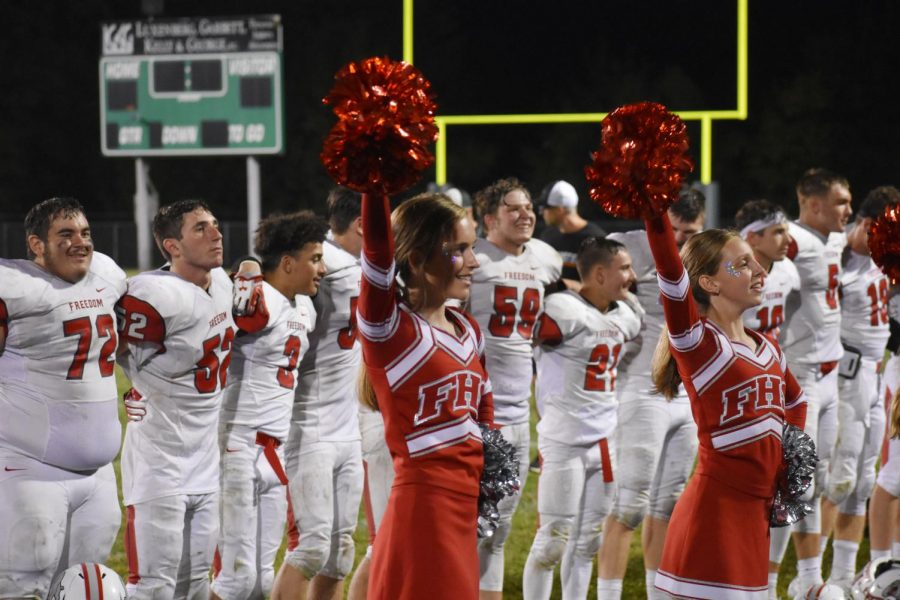Sweat it for credit
Student athletes should earn gym credits for sports
Cheerleaders strike a pose on the sidelines after the Bulldog’s victory at Riverside on Sept. 6.
FHS’s graduation requirements dictate that students must earn one physical education credit in addition to the mandatory gym and health class that freshmen take. Earning this final credit can be problematic for some students or even become a point of obstinance for others.
Altogether, gym-credit related conflict varies, but the school district took precautions to ensure that scheduling conflicts are not on the list. One such precaution manifests itself in the form of Cyber Physical Education class.
According to the class syllabus, the goal of Cyber Physical Education is to encourage students to adopt exercise into their daily routines. In order to accomplish this, students are required to exercise for 60 minutes each Red or White day, or every other school day. They must fully log and document this exercise, including dates, pictures and other specific details about each student’s activities. Then, all of this information must be compiled into a slideshow presentation to be turned in to high school gym teacher Chris Coennen once every month.
However, there is a major caveat to the class’s exercise requirements. School-affiliated sports are not permitted to count towards a student’s exercise total.
In context, not allowing school sports makes sense. School sports are not necessarily a habit, but more of an activity. Although they are a personal commitment and decision, an athlete’s activities and schedule are controlled by coaches and sports officials, not the athletes themselves. Players on sports teams do not decide when to have practice or when the team will play a game or hold a meet, the coaches do. This almost directly conflicts with the “students creating and sticking to their own exercise routine” ideology.
Despite this glaring truth, reality can seem harsh to said athletes, as their hard work and dedication to their sports still leaves their gym credit requirement, graded based on physical activity, unmet. The time spent dedicated to sports, most especially multiple sports per school year, easily rivals the time requirements necessary to earn gym credits.
Sports can be a full-time investment. Take golf for example. With 14 golf matches at three hours per match, along with practices, time spent with the team adds up to over 40 hours for just a single fall sport, not to mention any other sport during the year a student could choose to participate in.
Thus, if students are awarded with a physical education credit for hard work and dedication to personal exercise, students should be awarded with a physical education credit for their hard work and dedication to their team.
The class requirements could be identical. Dates, pictures and details could all be included in a Powerpoint reserved solely for sports. Whatever the final solution may be, student athletes should be compensated for their time spent being physically active in sports by not having to set aside valuable time to be physically active outside of their sport.



